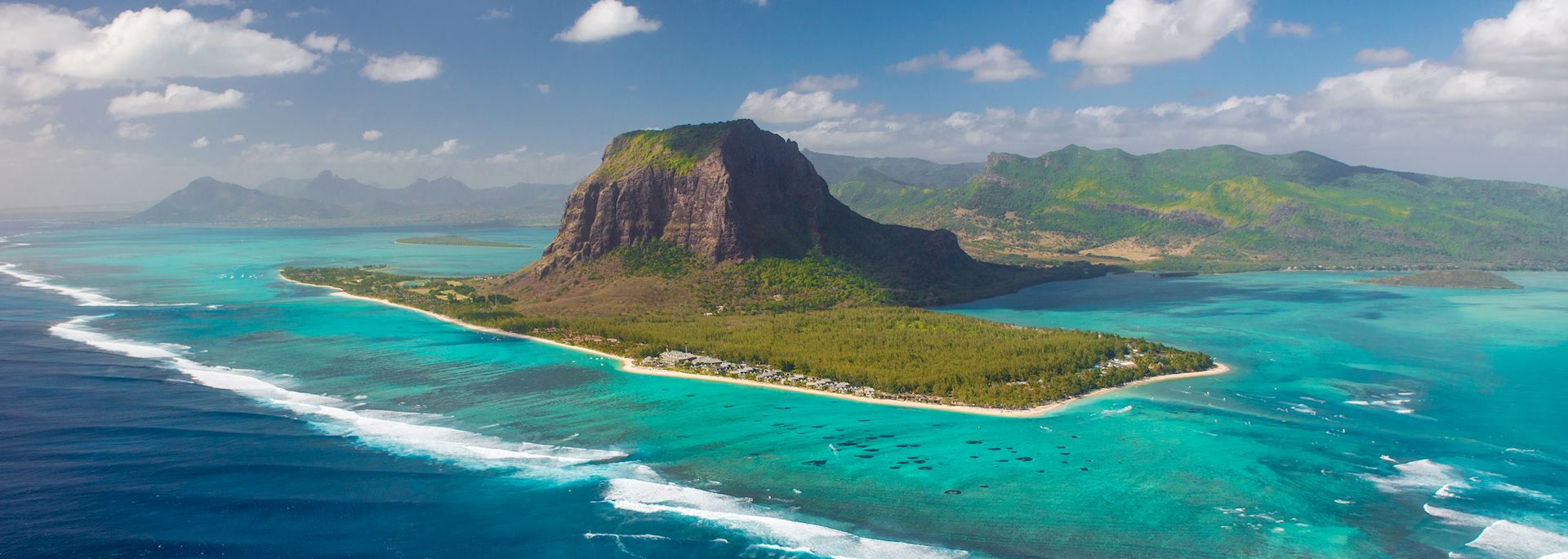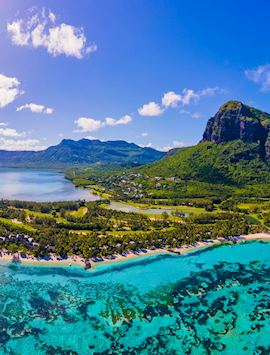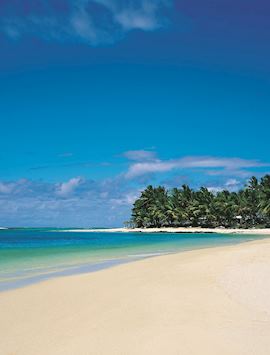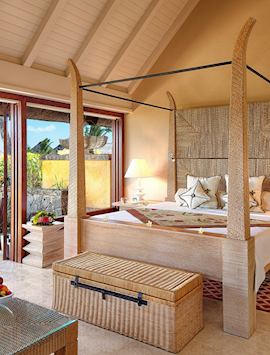By Mauritius specialist Natalie
Despite its small perimeter — just an hour and a half's drive from coast to coast — Mauritius is a hive of activity if you want it to be.
Drive 20 minutes inland from the white sand that rings the island and you'll be greeted by colourful houses and colonial churches standing alongside ornate Hindu temples — a result of the island's French, Indian and Creole settlers.
As you wind your way down the west coast, a terrain of lush sugarcane fields and banana plantations gives way to mountainous vistas.
Hire a car if you can; the road conditions are excellent and it's easy to cover the whole island.
Things to do in Mauritius, my selected highlights
Explore Pamplemousses Botanical Garden in Port Louis
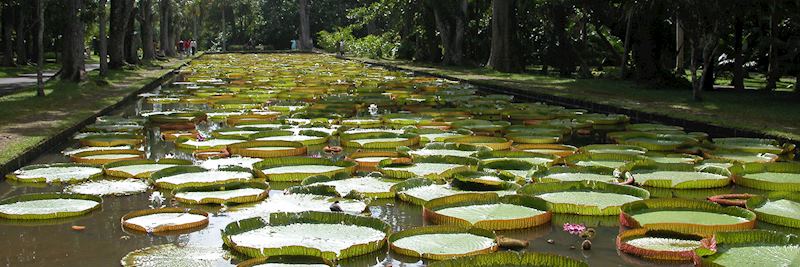
Steal a calm afternoon to visit the Pamplemousses Botanical Garden, located just outside the capital, Port Louis, and one of the oldest gardens in the Southern Hemisphere.
The gardens were originally reserved as a private plot for the French Governor of Mauritius in the 18th century. Crates of seeds were shipped in from around the globe, and today more than 650 species of exotic flowers grow in the gardens, including the bird of paradise plant and talipot palms.
Walk to the innermost point of the gardens in search of the large, central pond, which is covered in the giant waterlilies Victoria amazonica. Their lily pads are the size of tea trays and each plant produces a single flower that opens white and closes red. If you’re here around January you'll catch the lilies in bloom.
The plant labels are a work in progress, so I'd suggest hiring one of the expert guides on hand to point out the collection's most prized species from the 80-plus types of palms, and curious quirks like the sausage tree. Otherwise, just wander at will, strolling along the sun-dappled paths and listening to the birds.
Relax on a boat trip around the Mauritius coast

There are many boat charters and catamaran trips offering to whisk you out to snorkelling sites and remote islands. Popular islets like Coin de Mire draw the crowds. That said, spending the day finding starfish and washed-up coral on isles like Ile aux Cerfs is enjoyable for families in particular.
If snorkelling really appeals, though, I’d suggest sailing to Flat Island, known as Île Plate in French. The island is relatively untouched but for the ruin of an old Governor’s house, and the surrounding water remains undisturbed by boat traffic. While Mauritius’ reefs are normally a boat trip out from the beach, I found I could easily wade out from Flat Island and spot electric-blue fish darting around the corals.
Search for wildlife in the Black River Gorge National Park

In the southwest of Mauritius, just a short drive from the coast you’ll find 60 kilometres of untamed forest, home to waterfalls and birdlife including the likes of the Mauritius kestrel, cuckooshrike, and the endangered pink pigeon, which is endemic to the island. The Black River Gorge National Park, in the Chamarel Mountains, is dissected by the rushing Rivière Noire and woven with pathways that are fairly well-trodden and easy to navigate over smooth terrain.
Take a map with you or hire a guide, if you prefer. As you climb, the green awning of the forest clears to offer wonderful views over the mountain range and out to the Indian Ocean.
One particular rest-stop, known by any local person as ‘the one with the sugar cane truck’, has an ice cream van-style truck selling freshly crushed sugar cane juice. This has become quite the institution (just ask a passing local and you’ll be pointed in the right direction), but you’ll need to guard your juice from the opportunistic macaques that gather here.

Visit the sand dunes of the Seven Coloured Earth
The sand dunes of the Seven Coloured Earth in the Chamarel Mountains are aligned in a rainbow of red, copper, yellow, green, blue and purple stripes. A natural geological phenomenon caused by the volcanic activity in the region, the colours are formed from rich iron and aluminium oxides. I was told that even if you were to mix them up, they’d naturally return to their original layered order.
The dunes are protected so you can’t walk on them and, due to erosion, they're less spectacular than they once were. But they’re an arresting enough sight and worth setting aside a little time for. A side attraction — particularly for younger visitors — is the boulder-sized giant tortoises that live here. Indigenous to Mauritius and the Seychelles, they’re cousins of the tortoises found on the Galapagos Islands.
As you wind your way back through the pineapple, banana, and sugar cane plantations, stop off at the Chamarel Waterfall. You’ll hear it before you see it. Thundering down a sheer 100 metre-high cliff, it’s the island’s highest cataract. Walk between the series of tiered viewpoints for good photographic opportunities.
Sample locally produced rum on a distillery tour
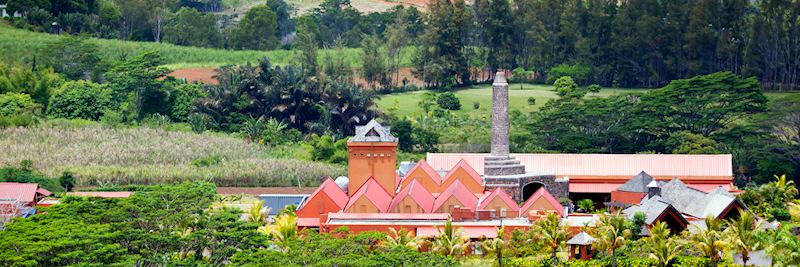
You catch the scent of sugary fermentation almost from the moment you walk into the manicured gardens of the Chamarel Rum Distillery.
One of the island’s famous exports is rum, and out of the island’s several distillery tours I’d recommend this one.
It’s a traditional, small-scale operation here, producing rum mostly for the island. As the dawn rays break over the hills, the workers handpick the cane on site, which come in red and yellow varieties.
Your guide will walk you through the entire process, from the tall, grassy fields of sugarcane, through to the impressive cask barrels and copper columns used for fermentation and distillation, before showing the finishing touches of flavouring and bottling. The distinct sugary smells from the stages of fermentation will hit you at each station.
The tasting at the end gives you the chance to try their range of white and dark rums. There’s also a selection of flavoured mixes, including mandarin, coffee and coconut. My favourite was the sweet, creamy vanilla infused rum, made using locally sourced pods that are left to saturate in the white rum. Take a bottle home if you can.
Learn about Mauritian history at L’Adventure du Sucre Museum
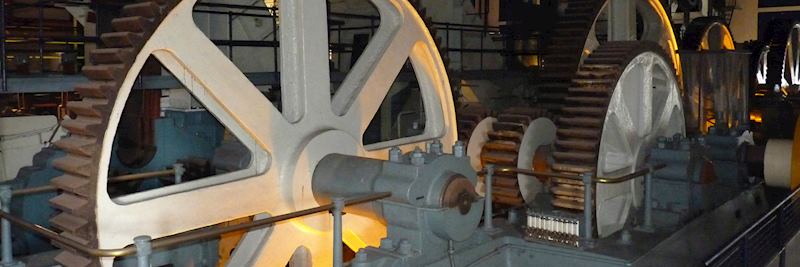
L'Aventure du Sucre, just outside Port Louis, is an important museum to visit in Mauritius if you want to get a grasp of its history. The story of sugar production is the main focus, but displays also cover the island’s slavery and rum trades.
Founded in 1797 as the Beau Plan sugar factory, operations didn’t stop here until 1999, so most of the machinery is still up and running.
I was glad I had time to do the museum justice. As well as learning about the complex process of making cane into granules, there are interactive videos and machines, including two locomotives that once transported the sugar.
This is all woven in with Mauritius’ social history and the role that 60,000 slaves played to produce the island’s main commodity. I learned that, at one point, they practically ploughed the whole island to grow cane.
As you wind your way around the huge copper vessels and vats, former factory workers are on hand to answer questions, which is a nice touch. Plus, children are guided by mascots who keep their interest up with stories, quizzes and the promise of sampling the natural sugary treats at the end of the tour. Adults can also try some of the local rum.
Start planning your trip to Mauritius
-
![Le Morne beach, Mauritius]()
-
![Mauritius is fringed by idyllic beaches]()
-
![Luxury Pavilion, The Oberoi Mauritius, Mauritius]()
The Oberoi Mauritius & Sabi Sabi Private Game Reserve South Africa
Mauritius and South AfricaView this tour
Start thinking about your experience. These itineraries are simply suggestions for how you could enjoy some of the same experiences as our specialists. They're just for inspiration, because your trip will be created around your particular tastes.
View All Tours in Mauritius